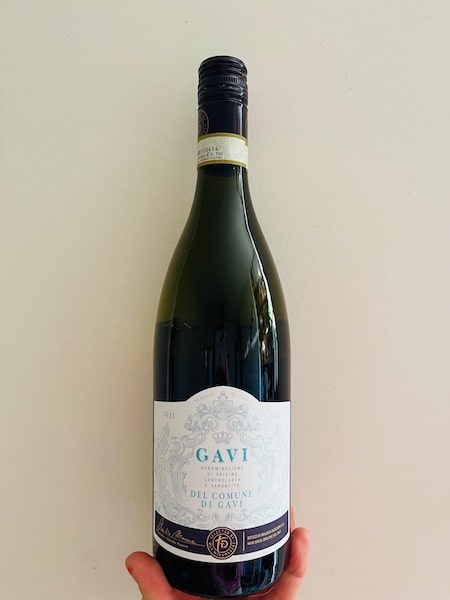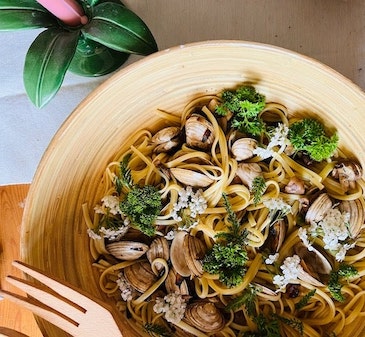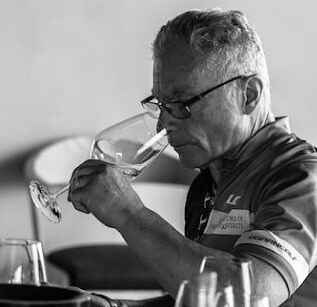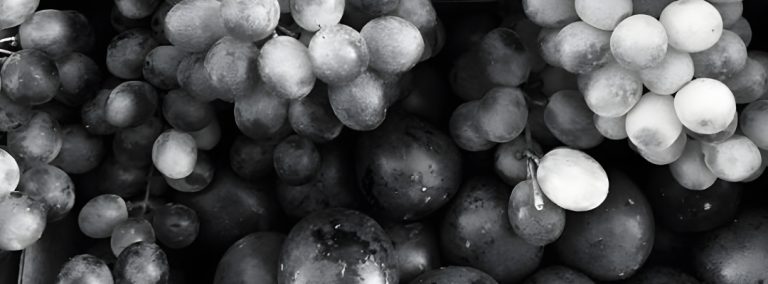Gavi di Gavi is a dry white wine from the Piedmont area of northern Italy. It has a pale golden color with a hint of green and is made with 100% Cortese grapes. This wine has high acidity with strong lemon and mineral flavors. You can also get citrus and almond notes on the nose.
The name Gavi di Gavi (pronunciation guide: gav-ee-dee-gav-ee) sounds a bit repetitive, but there’s a reason for this. Gavi di Gavi is from a wine growing area called Gavi where production comes from 18 separate growing districts. The largest and most famous district in Gavi is also called Gavi. This means a Gavi di Gavi is a wine that comes from this specific growing region in the Gavi area. So what’s the difference between Gavi di Gavi and another Gavi wine? The wines are generally the same, the Cortese grapes used to make Gavi di Gavi are just grown in a more specific and slightly more prestigious area.
Wines from Gavi are best enjoyed young and fresh and you can expect to pay between $15 to $20 for a bottle. They’re good summer wines, as they have high acidity, and you can drink them on their own or serve them with a variety of food. In fact, Gavi is a great white wine for dinner parties and other social gatherings because it goes well with different dishes. Pair it with fresh seafood, from oysters to seabass and sushi, or enjoy it with chicken, pork or veal served in a light lemon or butter-based sauce.
The Piedmont region
When you think of rolling hills in Italy and Italian vineyards, it’s typically Piedmont you’re picturing. Piedmont is at the foothills of the Italian Alps and Gavi comes from the southernmost area, close to the border with Liguria. This means it’s fairly close to the sea. In fact, it’s the closest area of Piedmont to the water and because of this, the Gavi region gets good breezes which help to prevent fungus and other diseases that can attack the vineyards.
Piedmont is famous for producing some of Italy’s finest red wines, in particular Barolo and Barbaresco, but it also makes great white wines, like Gavi, and even some Italian sparkling wines. Sparkling wine production varies from the off dry and fresh Asti Spumante, to the dry and distinctive “Alta Langa” DOCG sparkling wines made in the traditional method, aged for a minimum of 3 years. The production of these wines is fairly new and they are a great addition to Italian sparkling wines!

What are Cortese grapes like?
Vineyards growing Cortese grapes have been found in the Gavi area since the 10th century. The soil in this part of Piedmont is limestone and clay, which is ideal for growing white grapes for making wine. Cortese are high in acid and prefer to grow on hillsides, which makes sense given Piedmont’s landscape. The Cortese grape does best when summers are warm because it gives them more fruit and body, which helps to balance out their natural high acidity.
Cortese are a golden yellow at harvest and because the vines tend to have high yields, restrictive measures are often put in place, such as green harvesting or pruning. In this way, the remaining fruit gets more nutrition and ends up richer and higher in sugar content.

Getting its DOCG certification
The Gavi growing region of Italy first received its DOC or “Denominazione di Origine Controllata” in 1974. A DOC means wine production meets the regulations set out by Italy’s wine and grape growing authority and the local Consorzio, which is a board that oversees the wine district. If an Italian wine is DOC, you will see it on the label.
In 1998, Gavi was elevated to DOCG, which is an even higher quality specification. DOCG translates to Denomination of Controlled and Guaranteed Origin. Note, you’ll see this same DOCG label on many other wines from Italy, from Chianti Classico DOCG, to Barolo DOCG, and Amarone DOCG.
Who is making Gavi?
Some of the better known producers of Cortese wines from Gavi include Ascheri, Batasiolo, Pio Cesare, Vecchia Annata and Roberto Sarotto. For special occasions, you might enjoy a Gavi di Gavi made by Broglia. This wine is a little more expensive than most Gavi wines at $25+ a bottle.
The Gavi area has recently attracted a number of young, new Italian winemakers and many of them are women. Interestingly, they’re also leading production into more organic farming. In organic farming, no herbicides, pesticides or chemical fertilizers are applied to the vineyards.
Wine Tip: One way to tell if a wine from Italy is produced using organic farming methods is by looking at the label. Turn the bottle over and look for a little box on the back label. It will be green with white stars.

Food pairing ideas for Gavi di Gavi
Cortese wines go exceptionally well with seafood. Pair a Gavi di Gavi with shrimp cocktail, baked stuffed clams, tuna or salmon tartare, oysters on the half shell or even sushi. A Gavi di Gavi is also the perfect white wine to have with wood grilled octopus or squid and you can serve it with mixed charcuterie and antipasto plates as well. If you’re having Italian food and you see grilled branzino, a kind of European seabass on the menu, go for a Gavi di Gavi.
Cortese wines pair well with lemon and white wine based dishes like chicken and veal piccata, and with fried zucchini blossoms, linguini con vongole or veal milanese. Another top Gavi di Gavi food wine pairing is dishes with mushrooms, including mushroom risotto or funghi and polenta. This is because the acidity in the wine can help cut through the richness of the sauce. The same is true for Italian marsala wine based sauces and even veal or chicken parmigiana.
When faced with a menu of assorted arancini, order a glass of Gavi di Gavi and you won’t be disappointed!
If you like Gavi di Gavi, you’ll like these three wines
- Arneis. Arneis is an Italian white wine that comes from the vineyards of the Roero Hills, just outside and north of the Langhe area. It’s medium to full bodied and has complex flavors of pear and other stone fruits. The name of this wine actually means “little rascal” in Italian which is a nod to the difficulty wine makers have producing it. The grape needs to be picked at exactly the right time before it drops its acidity.
- Erbuluce. Erbuluce is a white wine from the northern area of Piedmont. It has flavors of apples and citrus notes. The grapes used to make it are thick skinned and high in acid, which gives the wine good vibrancy.
- Timorasso. This Italian white wine is from the southeast corner of Piedmont, next to Gavi. It had all but disappeared until 1980 when several local wineries decided to revive it. Timorasso is a high acid and high mineral wine with citrus notes. It’s actually a white wine that ages well and becomes more complex with a few years in the bottle.

More on Piedmont red wines
The Piedmont area of Italy is also famous for making two of Italy’s finest wines. Barbaresco and Barolo are both made from the Nebbiolo grape which does best in this more northern area of Italy. Barbaresco is an elegant red wine which is lighter bodied and less tannic than Barolo. It must be aged for 26 months and spend 9 months in oak.
Barolo wines tend to be bigger and have more structure to them. They are aged for 38 months and spend 18 months in oak before they can be released. Both of these wines are light ruby in color and have roses on the nose and flavors of cherry and berries with earthy tones. If you’re having a Barolo or a Barbaresco with your dinner, make sure to decant it for at least an hour before drinking.
Another famous wine and grape from the Piedmont area is Barbera. Barbera are popular Italian drinking wines with pronounced cherry and fruit flavors. Barbera can be made in two styles, including a medium bodied style with good acidity or an oak aged style where the wines have more body to them and are fuller in flavor.
You might also have heard of Dolcetto which is an Italian red from Piedmont. This is a wine you are better off drinking young. It is a deep purple in color and has blueberry-blackberry fruit notes. Both Barbera and Dolcetto benefit from being slightly chilled before drinking.





